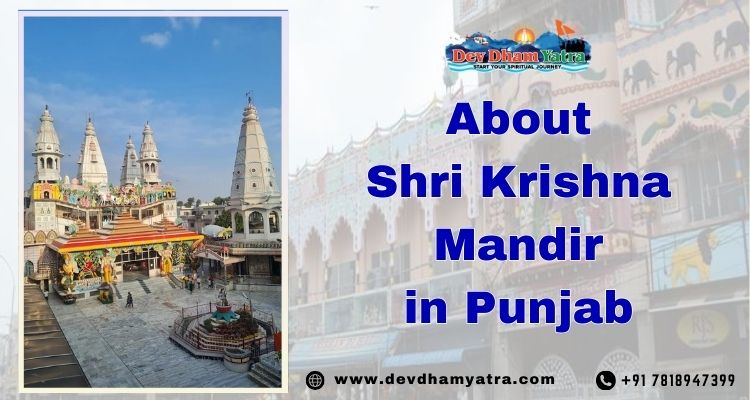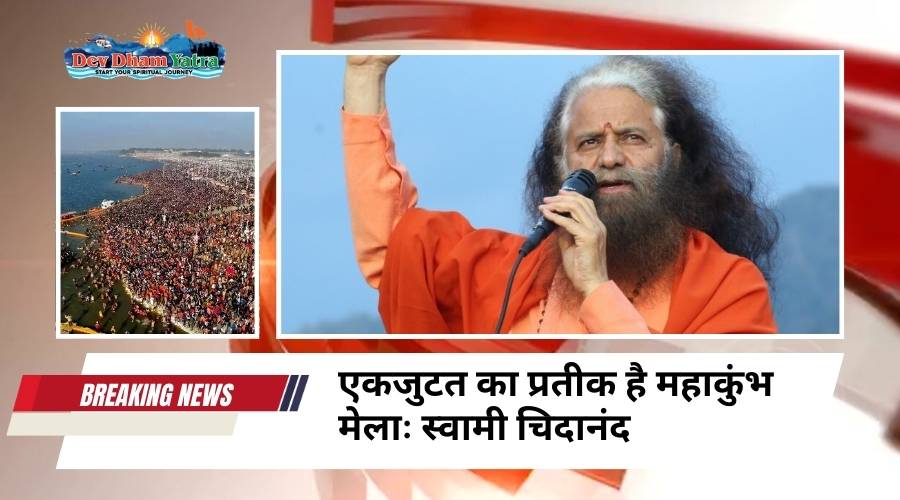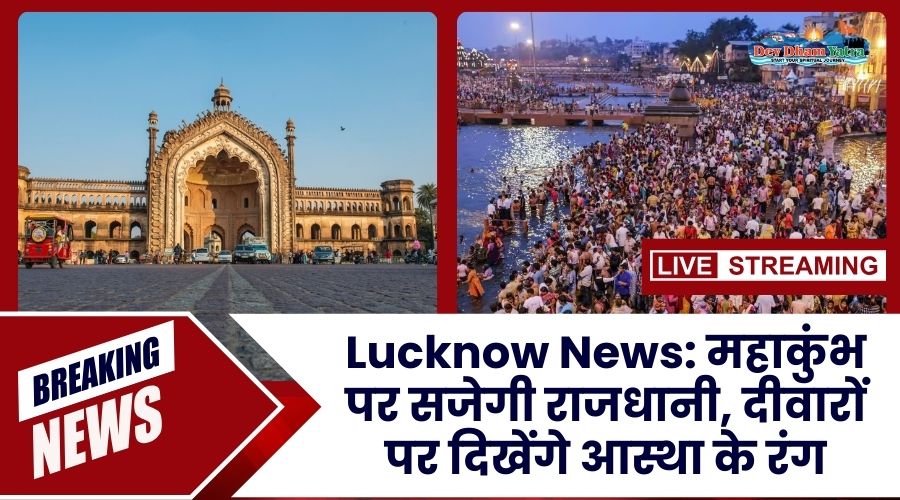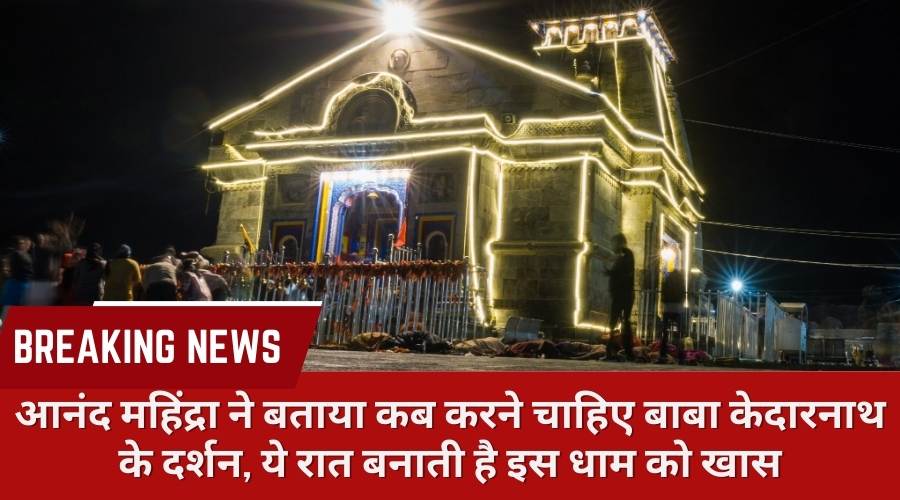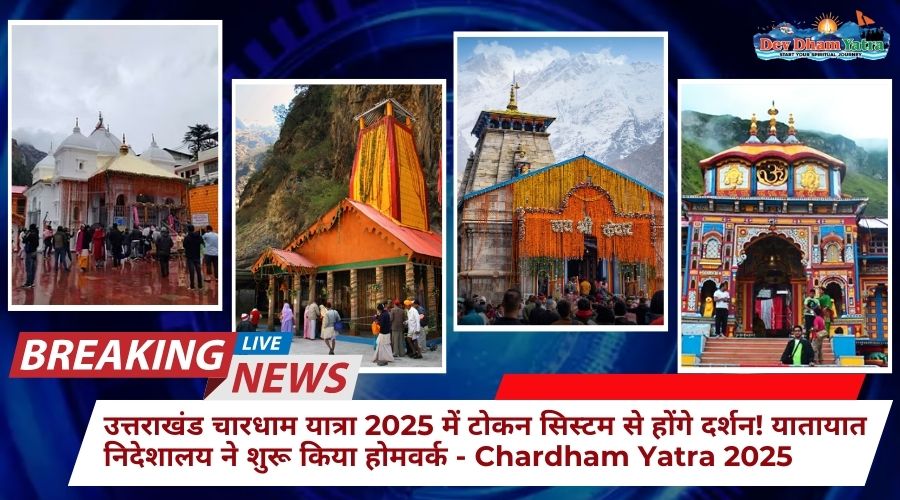Learn here about Shri Krishna Mandir in Punjab, festivals celebrated, timings, dress code, rituals, history, and FAQs.
Shri Krishna Mandir In Punjab
Shri Krishna Mandir in Punjab stands out as a unique place of worship, setting itself apart from other temples in several remarkable ways:
Architectural Marvel: The temple’s design and architecture are a blend of ancient wisdom and modern innovation. It incorporates elements of traditional Hindu temple architecture while also featuring contemporary aesthetics that make it an architectural marvel.
Statue Collection: With over 520 statues, the temple boasts one of the most extensive and diverse collections of deities and mythological figures. This collection not only showcases various forms of Lord Krishna but also includes representations of other gods and goddesses, making it a comprehensive spiritual destination.
Lord Hanuman’s Statue: The highlight of the temple is the awe-inspiring 37-foot-high statue of Lord Hanuman. This colossal and intricately crafted representation of the monkey god becomes a symbol of strength, devotion, and protection, drawing visitors from all over to witness its magnificence.
Community Healthcare: Going beyond its religious significance, Shri Krishna Mandir extends its compassion and service to the community through a charitable hospital. The provision of free medicines and surgical facilities to the poor reflects the temple’s commitment to uplifting the less privileged and embodying the principles of selfless service and empathy.
Green and Sustainable Practices: The temple complex has taken a proactive approach to environmental sustainability. It is equipped with eco-friendly features such as solar panels for energy generation, rainwater harvesting systems, and extensive green spaces that contribute to a cleaner and greener environment.
Inclusive Atmosphere: Shri Krishna Mandir is renowned for fostering an inclusive and harmonious atmosphere. It warmly welcomes people from all walks of life, irrespective of their religious beliefs, ensuring that everyone can find solace and inspiration within its walls.
Cultural and Educational Center: Alongside its religious and healthcare services, the temple serves as a hub for cultural and educational activities. It hosts art exhibitions, music concerts, and workshops on various subjects, promoting the rich heritage of India while encouraging the pursuit of knowledge.
Philanthropic Initiatives: Beyond the hospital, the temple actively engages in various philanthropic initiatives. These range from supporting local schools and orphanages to organizing community outreach programs and disaster relief efforts, making it a driving force for positive change in the region.
Technological Integration: Shri Krishna Mandir embraces technology to enhance the visitor experience and ensure efficient operations. It offers guided audio tours through mobile apps, online prayer bookings, and live streaming of religious ceremonies, creating a seamless blend of tradition and modernity.
International Pilgrimage Destination: Such is the temple’s grandeur and uniqueness that it has gained recognition as an international pilgrimage destination. Devotees and tourists from across the globe travel to Ludhiana to experience the divine ambiance and the temple’s extraordinary offerings.
Overall, Shri Krishna Mandir in Punjab stands as an epitome of devotion, compassion, innovation, and community service. It is a place where spirituality, culture, and social responsibility converge, making it a truly exceptional and revered institution.
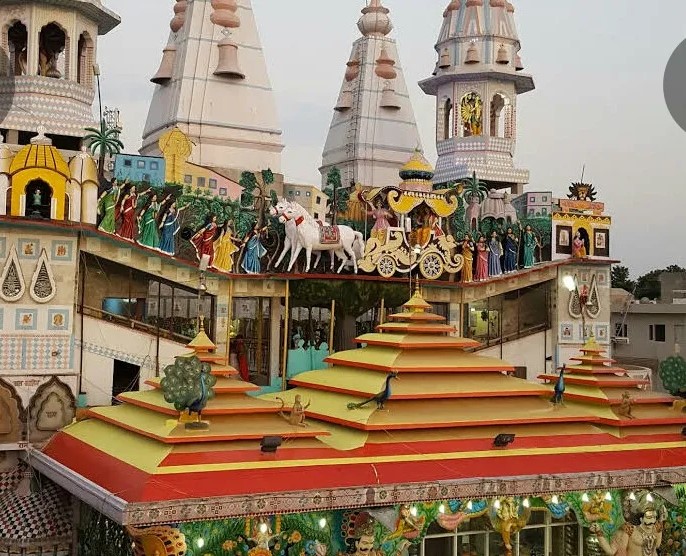
Festivals Celebrated In Shri Krishna Mandir, Punjab
Shri Krishna Mandir in Punjab celebrates a variety of festivals with great enthusiasm and devotion. Some of the prominent festivals observed in the temple are:
Janmashtami: Janmashtami is the birthday of Lord Krishna and is one of the most significant and widely celebrated festivals in the temple. The occasion is marked by special prayers, devotional singing, and elaborate decorations. Devotees often participate in processions and reenactments of Lord Krishna’s birth and early life.
Holi: Holi, the festival of colors, is another major celebration at Shri Krishna Mandir. Devotees come together to play with colored powders and water, symbolizing the victory of good over evil. The festivities create a joyful and vibrant atmosphere on the temple premises.
Diwali: Diwali, the festival of lights, is observed with fervor at the temple. The entire temple complex is adorned with colorful lights and oil lamps, creating a mesmerizing spectacle. Devotees offer prayers and participate in various cultural programs during this auspicious festival.
Radha Ashtami: Radha Ashtami is the celebration of the appearance day of Goddess Radha, Lord Krishna’s divine consort. Devotees perform special pujas and sing devotional songs in praise of Radha Rani, seeking her blessings for love and devotion.
Govardhan Puja: Govardhan Puja, also known as Annakut, is celebrated with reverence to commemorate Lord Krishna’s act of lifting the Govardhan Hill to protect the villagers from torrential rains. Devotees offer a variety of food items as a symbolic mountain of offerings to Lord Krishna.
Guru Purnima: Guru Purnima is a day dedicated to expressing gratitude to spiritual teachers. Devotees gather at the temple to honor the wisdom and guidance imparted by their gurus and seek blessings for their spiritual journey.
Ratha Yatra: The Ratha Yatra, also known as the Chariot Festival, involves the procession of the deities on elaborately decorated chariots. Devotees enthusiastically pull the chariots through the streets, singing and dancing in celebration of the divine presence.
Makar Sankranti: Makar Sankranti is a Hindu festival that celebrates the solar event of the sun’s movement into the zodiac sign of Capricorn (Makar) from the zodiac sign of Sagittarius (Dhanu). Devotees take holy dips in rivers and perform rituals to seek blessings and good fortune.
Navaratri: During Navaratri, a nine-day festival dedicated to Goddess Durga, the temple resonates with devotional fervor. Special ceremonies and cultural programs are organized to honor the divine feminine energy.
Maha Shivaratri: Shri Krishna Mandir also observes Maha Shivaratri, the night of Lord Shiva, with prayers, fasting, and meditation. Devotees seek Lord Shiva’s blessings for strength, wisdom, and spiritual growth.
These festivals add color, joy, and spiritual significance to the atmosphere of Shri Krishna Mandir in Punjab, making it a hub of cultural and religious celebrations throughout the year.
Information Related To Shri Krishna Mandir In Punjab
The address to visit Shri Krishna Mandir in Punjab is:
Krishna Mandir,
Krishna Mandir Rd., Model Town Extension,
Ludhiana, Punjab, India,
Pincode: 141002.
Timings to visit the temple:
The visiting hours of the mandir are 6:00 a.m. to 9:00 p.m.
Darshan Dress Code of the Temple:
There is no dress code to visit the temple, but you have to wear neat and traditional clothes and avoid any kind of fashion wear.
Rituals in Shri Krishna Mandir in Punjab:
The main ritual in Shri Krishna Temple in Punjab is that the morning pooja and arti to Lord Krishna start from 07:00 AM onwards.
History of Shri Krishna Mandir In Punjab
The temple’s establishment in 1897 by Kanji Mal and Ujagar Mal Ram Rachpal as a place of worship for the Hindus in the region highlights their devotion and commitment to providing a sacred space for religious practices.
The partition of India and Pakistan in 1947 had a significant impact on religious communities, leading to the closure and migration of many temples and religious institutions. It’s noteworthy that, despite the challenges during that period, the Krishna Temple was reopened in 1949, showcasing the resilience of the local Hindu community and their desire to preserve their religious heritage.
By handing over the temple to the local Hindu Panchayat (a council or representative body) for the Hindus who chose to remain in Pakistan, the Krishna Temple continued to serve as a central place of worship for Rawalpindi’s Hindu population. This act reflects the commitment of the local authorities to uphold religious freedom and provide a place for Hindus to practice their faith.
The history of the Krishna Temple in Rawalpindi is a testament to the rich cultural and religious diversity in the region and the importance of preserving and respecting the heritage of various communities. Temples like Shri Krishna Mandir in Punjab continue to play an essential role in fostering communal harmony and allowing people to connect with their religious and cultural roots.
Frequently Asked Questions (FAQs):
Q: Is photography and videography permitted in the temple?
A: You are invited to use your camera or video recorder to document the temple’s beauty and spirituality, but you must first get permission from the temple’s administrators.
Q: Is there anything for physically handicapped visitors?
A: The temple is dedicated to making its facilities comfortable and accessible to all visitors. For physically challenged people, we provide wheelchair ramps, elevators, and adapted seating configurations.
Q: Is it possible to purchase devotional objects or books from the temple?
A: Yes, our temple shops sell a wide range of devotional materials, books, and other spiritual goods. Additionally, you can give to the temple or support a service there.
Q: When is the ideal time to go to the temple?
A: During the morning and evening aartis, a huge number of worshippers visit the temple. You might go to the temple in the afternoon for a more tranquil and calm experience.

